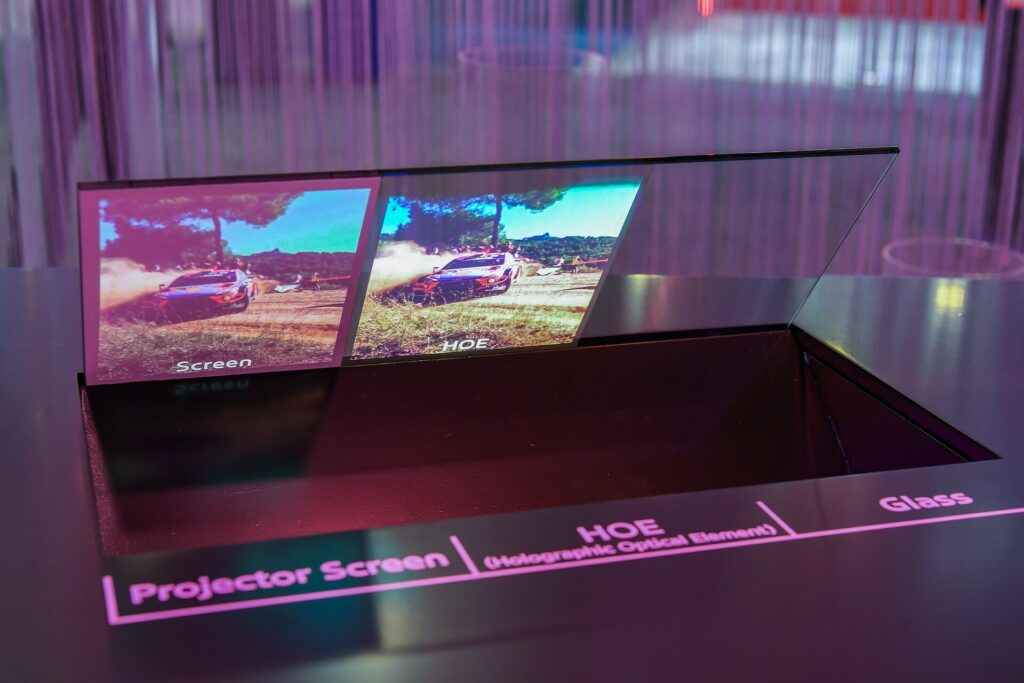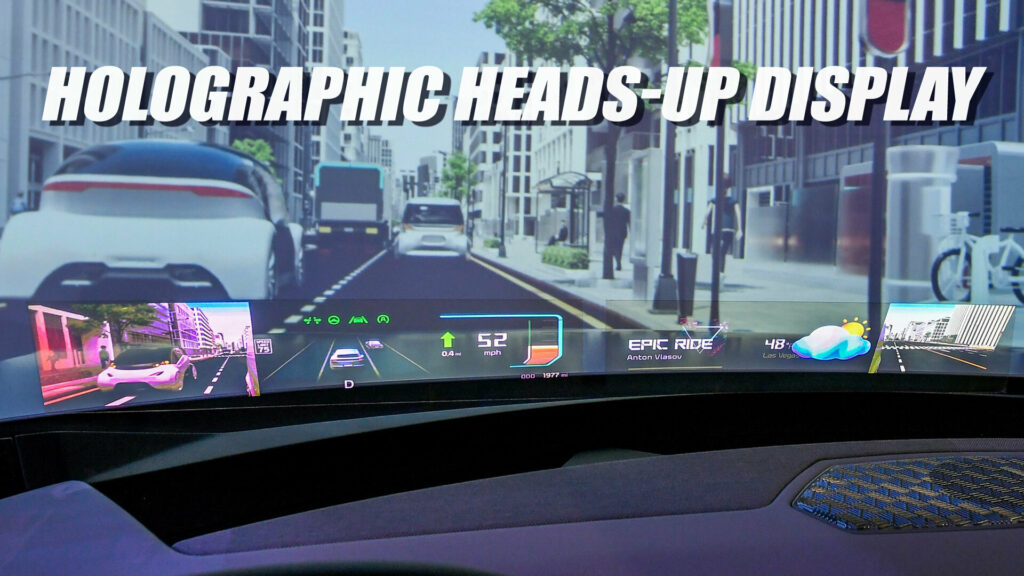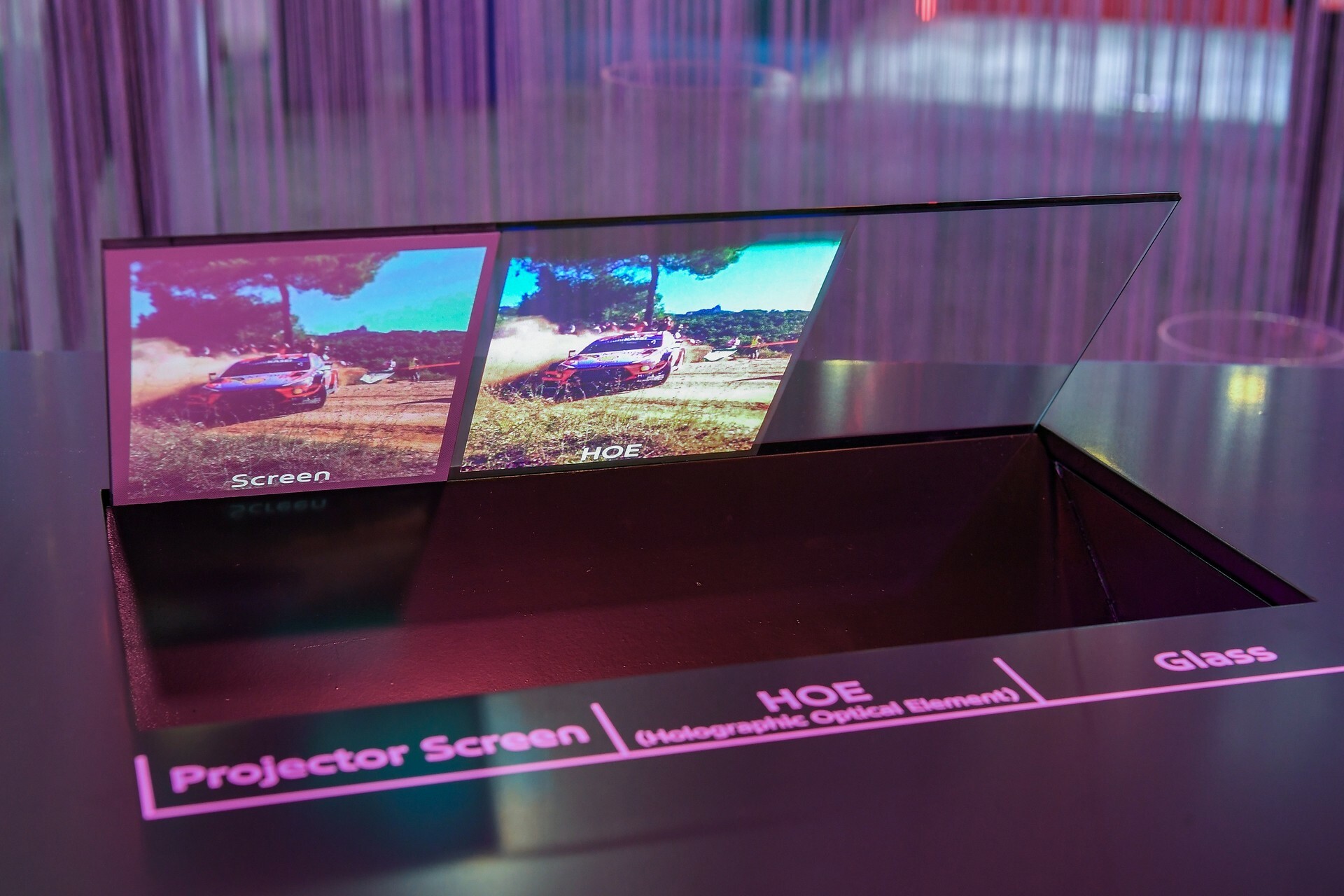- Hyundai Mobis has introduced a Kia EV9 equipped with a holographic head-up display.
- It uses a projector and special film to display images and video on the windshield.
- Pre-development wrapped up last year and mass production could begin as early as 2027.
BMW used CES to introduce their new Panoramic iDrive system, which features a pillar-to-pillar display located at the base of the windscreen. Now, Hyundai Mobis is one upping them with a holographic head-up display that projects information onto the bottom of the windshield.
While the two ideas are similar, Hyundai Mobis’ is far more advanced and has the benefit of being transparent. It’s been installed in a Kia EV9 and relies on a high-tech projector as well as a transparent film that is applied to the windshield and measures just 100 micrometers thick, which is slightly larger than a strand of hair.
More: BMW’s Panoramic iDrive Brings Pillar-To-Pillar Display To Future Models
The film, known as the holographic optical element, “uses the principle of diffraction of light (the bending of light from its original path to reach its destination) to efficiently deliver images and videos projected from the projector to the eye position of persons in the driver’s and passenger’s seat.” It also offers a privacy mode to prevent the driver from being distracted by what the passenger is viewing.
While the film has been applied to the base of the windshield, Hyundai Mobis noted other configurations are possible. This includes putting the holographic optical element on the sides of the windshield, so the holographic head-up display would “work like a smartphone’s curved edge screen.”

The high-tech HUD consists of multiple sections and can show an instrument cluster, side camera views, navigation information, and entertainment – among other things. This eliminates the need for a traditional instrument cluster as well as a front passenger display. Hyundai Mobis added the display works in bright outdoor environments and looks like a traditional glass window from outside.
The company has been working on the display with Zeiss for awhile and “pre-development” was completed in the first half of 2024. It’s now slated to be ready for mass production as early as 2027 and Hyundai Mobis has previously said the worldwide holographic HUD market could hit seven million units by 2030.









